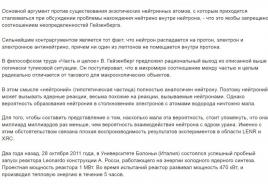Trial in biology. Demo of exam in biology
The Unified State Exam in Biology is taken at the choice of a student who plans to enter a higher educational institution with a specific specialization. In terms of popularity, this item is ranked 5th-6th every yearplaces, about 18% of students take it. Which universities need biology? This subject is leased in educational institutions of this orientation: medicine, biology, pedagogy in the specialty "Teacher of Biology", agriculture, veterinary medicine, physical education, psychology, garden design, ecology, technical specialties, where biology borders on physics. Professions: psychologist, ecologist, athlete, engineer, doctor.
The work consists of tasks, which are conventionally divided into two parts. In 2018, there were 28 tasks: 21 - tests, you need to choose an option from the proposed ones, 7 - of increased complexity, you need to give a detailed answer.
210 minutes are given for work - the student decides how to allocate time for answers.
The threshold score for admission to different universities depends on the requirements of the particular educational institution - this information needs to be clarified at the university.
- The first part contains tasks for knowledge of theory and the ability to use this knowledge. Types of tasks in the first part: for multiple choice (may be accompanied by a picture), for establishing a logical sequence, for solving problems, adding data in a table, for analyzing data.
- The second part aims to identify the characteristics and depth of knowledge of the subject. The purpose of such tasks is to test the ability to establish cause-and-effect relationships, draw conclusions, use theory in practice, substantiate your position, think logically. It is this part of the test that is key in the selection process for potential university students.
The first part is checked automatically using a computer. The second is analyzed by specialists.
What is the difficulty of the biology exam?
- The main difficulty lies in the significant amount of information that needs to be repeated. School course starts in grades 5-6, so you have to "dig deep" in preparation.
- Difficulties are also associated with the structure of the exam. High-quality theoretical knowledge does not necessarily guarantee successful passing the exam - it is necessary to learn how to perform tasks of certain types. This can be learned with the help of a professional tutor or by taking an online test. Every year new types of tasks are introduced into the structure - you need to be ready for this.
- The most difficult topics are: photosynthesis, DNA, energy metabolism. With these sections and tasks on this topic, it is better to contact the tutor.
How to prepare effectively for the exam?
- The main thing is to listen carefully in class and study textbooks. This will become a solid base for successful exam passing.
- Planning: systematic preparation requires a stable and thorough study of the material of the USE program.
- Self-education: read reference books, yourself.
- Take online testing.
The main advantage of online testing is the ability to work out the ability to solve tasks to automatism different types and the level of difficulty, correctly allocate time on the exam. It is recommended that you prepare for the second part with a teacher or tutor.
There are a lot of professions related to biology. And if the graduate decided to devote his further life to medicine, psychology, pedagogy, technology food Industry, pharmacology or agriculture, then the examination in biology after graduation comprehensive school is mandatory for him. What will USE in biology 2017?
The state exam in biology in 2017 will be different from the exams of previous years. Not many changes have been made, but they are significant.
New, more streamlined structure proposed examination work... Reduced the number of tasks to 28, compared to 40 in 2016. The maximum number of primary points for all work has been reduced, now it is 59 points, instead of 60 last year. But the amount of time to complete the examination work has been increased to 210 minutes, instead of 180.
The exam will no longer have single-correct-answer questions. In this regard, the probability of guessing is minimized. After all, before it was possible to connect intuition, pass the threshold and score the minimum number of points. Now intuition is not our assistant, we need knowledge. You will have to prepare carefully and start as early as possible. But there is good news as well. The difficulty of the tasks has not changed, and the time to complete them has increased by 30 minutes.
Exam work of the exam in biology 2017 contains 28 tasks, consists of two parts, each of which has its own level of complexity and format.
First part of the exam
The first part consists of 21 tasks with a short answer. Moreover, the answers will need to be written in the form of words or phrases, numbers or a sequence of numbers, without spaces and separators.
The first part includes tasks of two levels of difficulty: 10 - basic level and 11 - increased.
This format is the first innovation and a significant reason for passing the demo version of the exam in biology 2017.
The second innovation in the content of the tasks. The graduate will need:
- analyze information in graphical or tabular form (1 task)
- supplement the missing information in the diagram and table (2 tasks)
- establish the sequence of systematic taxa, biological objects, phenomena, processes (3 tasks)
- solve biological problems in cytology and genetics (2 problems)
- perform tasks with multiple choice (7 tasks) and establish correspondences (6 tasks) with or without a picture
So, 21 tasks of a new type have significant differences and allow you to more accurately assess the knowledge of the passed material, and also require serious preparation.
Second part of the exam (increased difficulty)

The second part of the USE in biology 2017 is focused on graduates with a high level of knowledge in the subject, or rather, on their identification. There will be no changes here. As in 2016, there will be 7 tasks, formed by type learning activities and according to the topics of the subject. Graduates write the answers to them independently in expanded form. There are also no changes in terms of difficulty: 1 task of the advanced and 6 high level.
In the second part, the graduate must independently explain and substantiate biological phenomena and processes, be able to analyze, systematize and integrate knowledge, and confirm the theory with practice. And all this should be correctly formulated in a detailed answer.
How is it evaluated
Primary maximum number of points for state exam changed in 2017, but not significantly.
For completing 10 tasks of the basic level of difficulty, 17 points are given, for 12 tasks increased level - 24 points, for 6 high-level tasks - 18. In total - 59 points. for passing the exam in biology will be 36 points.
What you need to know

The exam involves testing the knowledge of the subject in full. And if something is missed, even for a good reason, this fact is not taken into account on the exam. Therefore, it is advisable for a future graduate to start preparing for already in September in order to have time to fill in all the gaps.
Biology knowledge testing will be carried out in the following sections:
- Biology as a Science. Methods of scientific knowledge
- The cell as a biological system
- The organism as a biological system
- System and diversity of the biological world
- The human body and its health
- The evolution of wildlife
- Ecosystems and their inherent patterns
Use this list to test yourself and pull up overlooked topics.
What you need to be able to

At the exam in biology, it is also important to show your skills and abilities to use the knowledge gained. A graduate must correctly apply terminology, identify biological objects not only by description, but also by drawing. When explaining biological processes, those who use not only a word, but also tables, graphs, and diagrams will have a significant advantage. Solve problems, draw conclusions and apply theoretical knowledge in practice, in everyday life.
Every year FIPI publishes an updated demo version of the Unified State Exam in Biology. The graduate has the opportunity to calmly deal with instructions, assignments, rules of conduct, assessment criteria, practically pass all stages of the exam. Of course, the demo version is not an exact copy of the USE, but, nevertheless, it allows the student to feel calmer and more confident when everything is going on for real.
In preparation for the exam in biology, each graduate needs to take into account his personal, individual characteristics. Everyone knows their strengths and weaknesses, memory capabilities, performance. Those who have not yet figured out this can turn to their parents and teachers for help. It is worth talking to those who have already taken the exam and get additional information first-hand. In a word, all the methods are good for preparation, the main thing is not to leave everything for May, not to hope for "maybe it will carry over", but to start systematically studying now.
Biology is one of the subjects that the graduate chooses on the exam himself. And if he makes a choice in favor of biology, then this science is to his liking. Therefore, all worries and worries must be left outside the door so as not to interfere. And take with you composure, confidence, remember everything and get the highest score.
Video news, demos
Training options for the exam in biology
After the thematic tasks in biology, start practice. Since to demonstrate a high level of knowledge, it is necessary to confidently work with diagrams, tables and graphs. Explain biological processes using graphical information.
First of all, download the FIPI, which is a model and gives an idea of \u200b\u200bthe structure and form of the complexity of future tasks on the exam.
Based on the new demo, developed 10 training options, register and track the level of knowledge in your personal account.
Identify, analyze mistakes and train again. Your success is a constant solution of options during preparation!
The USE test in biology 2019 includes 28 tasks.
- Part 1 contains 21 tasks with a short answer (a sequence of numbers, a number, a word or a phrase)
- Part 2 contains 7 tasks with a detailed answer (give a full answer: explanation, description or justification; express and argue your own opinion).
The variant is grouped thematically.
- The first part contains 21 tasks, which are grouped by meaningful blocks, presented in:
- Multiple choice;
- To establish correspondences;
- To establish a sequence of processes or phenomena;
- Tasks in cytology and genetics;
- For the addition of drawings;
- Analyze a schema or table.
- The second part contains 7 tasks. For the successful solution of which, the student is required to thoroughly master the conceptual apparatus and competently operate with biological terms.
Brief analysis of the conditions of some tasks
Tasks from the block of the first ticket:
- - a biological fragment is presented, requiring the establishment of links between concepts;
- - count the number of chromosomes and establish the number of cells formed during various processes;
- - find examples in the text that correspond to the concepts;
- - to test the knowledge of species properties - from the test, select the criteria corresponding to the species.
Assessment of tests in biology USE
Behind first part ticket maximum - 38 points.
For solving problems second part - 20 points.
The points received for correctly completed tasks are summed up.
Converting points to grades
- 0-35 points - 2,
- 36-54 points - 3,
- 55-71 points - 4,
- 72 and above points - 5;
For admission to budget place in prestigious university you need to score more than 84 points.
Decide! Go for it! Strive for the best!
In 2017 year of the exam big changes await in biology. The upcoming reform is being carried out in accordance with the plans of the Ministry of Education, announced several years ago. The goal of the reform is to get away from the usual test system, which, according to the officials themselves, gives rather unreliable results. And in 2017, biology has become another subject from which all test questions are removed.
the date of the
- 03.2017 - the first stage, early;
- 04.2017 - reserve day of the first stage;
- 06.2017 - the second stage, the main one;
- 06.2017 - reserve day of the second stage;
- 06.2017 - reserve day in all subjects.
Changes in the exam in biology in 2017
In 2017, schoolchildren will receive reforms in three subjects at once: chemistry, physics, biology. What changes have been made to the exam in biology? First of all, it is removing the test part and replacing it with blocks with short answers.
- Changing the number of tasks. The USE 2017 will have 28 tasks, not 40, as it was before.
- Introduction of new types of tasks. Instead of tasks with the choice of one correct answer out of four proposed options, the exam included tasks for adding or restoring tables and diagrams. Testing the skills of working with graphic material - pictures, diagrams, tables, graphs - becomes an important part of the biology exam.
- Increasing the duration of the exam. The time allotted for the 2017 Unified State Exam in Biology will increase to 210 minus (against 180 last year).
- Decrease passing score... The primary / threshold score in biology in 2017 has been lowered to 59 (from 61 last year).
Exam structure:
- Examining data in a table or graph - 1 task
- Filling tables - 1 task
- Filling schemes - 1 task
- Solving problems in genetics / cytology - 2 tasks
- Determination of the sequence in processes / phenomena - 3 task
- Search for matches - 6 tasks
The approximate structure of the exam is observed in all bases and demo versions of the exam, and this greatly facilitates preparation. Of particular note is that the new CMM model is similar to variant of the OGE in biology, taken in ninth grade. So future graduates need not worry - the exam structure will not be something fundamentally new for them.

Assessment for the exam
The minimum number of points that must be scored in biology is 36, and the primary point is 59. For the correct answers to some questions, the student can receive one point, and for some - three.
- Questions 1, 3, 6 - answers to them are estimated at 1 point;
- Questions 2, 4, 5, 7, 8, 9, 10, 11, 12, 13, 14, 15, 16, 17, 18, 19, 20, 21, 22 - you can get 2 points for correct answers;
- Questions 23, 24, 25, 26, 27, 28 - correct answers bring 3 points.
As FIPI warned, some issues are deliberately complicated. The answers to them are within the power of only those who know biology perfectly. Such questions will require not just a short answer, but arguments in favor of the chosen version and a detailed explanation of the train of thought.
How to prepare for the exam
To help schoolchildren easily and hassle-free pass the Unified State Exam in Biology, FIPI publishes auxiliary and methodological materials.
Preparation for the exam in biology 2017 must necessarily include work with exam demo versions. To date, there are 36 options for CMMs, all of them with a similar structure, that is, for preparation, you can take any of the options proposed by FIPI.
The methodologists assure that preparation for the exam will take quite a long time, and in order to successfully master the material, it is best to draw up a schedule and adhere to it. In preparing schoolchildren, recommendations created by FIPI specialists will certainly help:
- Based on the topics published by FIPI, make a list of subsections to be repeated. Based on the volume and complexity of the topic, make a timetable for studying them, while more time should be devoted to complex topics than to simple and easy ones.
- The best way to study the material is from a school textbook. As additional sources, you can use the methodological materials and information from the worldwide network recommended by the department.
- To facilitate the study of the topic and facilitate the memorization of the material, summarize the data on the topic being studied in a table or a schematic summary.
- Use the KIMs published on the FIPI website for preparation. This will allow you to spot knowledge gaps on specific topics.
- As you study new topics, periodically return to old ones, repeating and refreshing the material you have covered.
The exam demos will help you prepare for the exams. In addition to the already mentioned opportunity to detect poorly studied topics, online versions help to get acquainted with the structure of the exam itself.

Output
Considering all the changes made, we come to an uncomfortable (for some schoolchildren) conclusion - it will be much more difficult to pass the USE in biology in 2017 than in 2016. It will be more difficult to get both the minimum number of points, that is, to reach the passability threshold, and to gain the maximum value. You lose the chance to get points for guessing, you have to really prepare for the exam and study the subject thoroughly.







